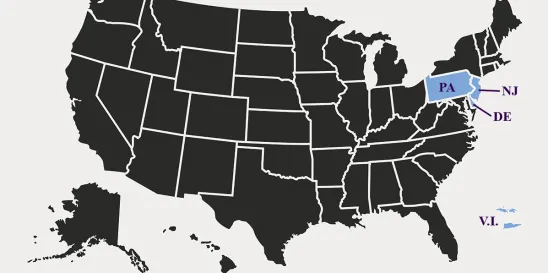On Tuesday, the Third Circuit, handed down a decision in a case involving the Consumer Financial Protection Bureau ("CFPB") and the National Collegiate Master Student Loan Trust ("NCMSL") that finds that statutory trusts used to handle securitizations are considered “covered persons” for purposes of the Consumer Financial Protection Act ("CFPA") and thus, are subject to CFPB jurisdiction.
NCMSL has been fighting the CFPB on jurisdictional grounds for several years and the parties got close to settling in 2017, however, the United States District Court for the District of Delaware refused to accept the proposed consent judgment due to pending concerns regarding the constitutionality of the CFPB. However, due to two Supreme Court decisions involving the constitutional issues that have plagued the CFPB (including Seila Law and Collins), in this decision, the Third Circuit found that even if the CFPB Director’s position was unconstitutional because the Director could not be removed at will by the President, etc., that unconstitutionality did not cause actions taken by the CFPB Director to be void, because the CFPB Director’s appointment had proceeded constitutionally.
The other jurisdictional ground that NCMSL challenged the CFPB on was whether the statutory trusts were “engaged” in consumer financial services under the CFPA. The purpose of these statutory trusts is to facilitate the transfer of ownership of the loans into securitization pools. Accordingly, these trusts have no employees and are necessarily engaged in an extremely limited set of activities, all of which occur as a result of automatic processes established by the agreements used to set up a securitization of loans, and which activities are overseen by a party that does have employees, often called the “Administrator.” The Third Circuit ignored this automatic process aspect of the statutory trusts, commenting in a footnote that “[w]hile the Trusts purport that the Administrator is separate from the Trusts” and is “not subject to the supervision of the [Trusts] or the Owner Trustee” the Court does not need to “. . . address th[e Administrator’s role]. It is a bridge too far. All we need to determine is whether the Trusts engaged in such agreements.”
With that viewpoint in mind, the Court found that based upon legislative history, plain language and the language of the administration agreements used in the transactions, the statutory trusts are considered “covered persons” under the CFPA. Covered persons under the CFPA are not only subject to CFPB jurisdiction, but also have primary responsibility for full compliance with consumer financial services laws and regulations.
Due to the proposed consent order between the parties that was made publicly available in 2017, we have a good idea as to what the CFPB will do with this new-found jurisdiction. Practically speaking, this means, at a minimum, that going forward statutory trusts used in consumer asset securitizations should themselves have proper policies and procedures in place [for] interpreting consumer financial services laws relating to servicing loans and collecting debts. In addition, to the extent existing securitization trusts have significant collection lawsuits being filed on their behalf by their servicers, such trusts would be well-advised to direct their servicers to cease filing new collections lawsuits and begin a “look-back” review over those collection lawsuits to ensure that none of the flaws the CFPB noted in the NCMSL case exist, starting with the cases that are pending and then proceeding into lawsuits that have already been concluded.
In other words, this decision:
- Could effectively completely undermine the non-operating nature of the trusts used in consumer asset securitizations; and
- Means that the trusts would be treated like any other lender or servicer, accountable to the CFPB (and also, possibly have liability to private litigants, as well as the states).
Taken to its logical end, this means that trusts could need direct management, operations (perhaps including risk and compliance), and capital to manage the assets and business.





 />i
/>i

